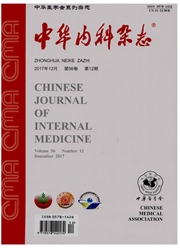

 中文摘要:
中文摘要:
目的观察急、慢性乙型肝炎(AHB、CHB)患者外周血CD4^+CD25^high调节性T细胞(Treg)的频率、表型和功能特点。方法采集16例AHB急性发病期(发病后第1周)患者、72例CHB患者和32例健康人的外周血,检测Treg频率,并分析其表面CD45RO、CD45RA、HLA-DR、CD95和细胞内细胞毒T淋巴细胞相关抗原4(CTLA-4)的表达水平。应用实时荧光定量RT-PCR检测CD4^+CD25^+、CD4^+CD25^-、CD4^+和CD4^-等细胞亚群和外周血单个核细胞(PBMC)的FoxP3 mRNA表达量。通过MACS免疫磁珠分选Treg,并应用[^3H]掺入法检测Treg抑制抗-CD3抗体和HBV抗原刺激的PBMC增殖能力,并观察Treg对HBV抗原或抗-CD3抗体刺激自体PBMC分泌IFNγ的影响。结果CD4^+CD25^high Treg高表达CD45RO、HLA-DR、CD95细胞内CTLA-4,低表达CD45RA,并且较特异的高表达FoxP3 mRNA。乙型肝炎病人外周血Treg频率与健康对照(3.50±0.72)%比较无统计学差异,但CHB组(3.90±1.44)%显著高于AHB组(3.10±0.87)%,P〈0.05。Treg本身对于HBV抗原或抗-CD3抗体刺激没有明显的增殖反应和IFNγ分泌,但可抑制自体PBMC增殖和IFNγ分泌,其中对HBV抗原刺激引起的细胞反应抑制作用较强。结论HBV感染者外周血Treg较特异地表达FoxP3分子,能抑制HBV抗原特异性细胞免疫反应,这对于深入阐明CHB发病机制具有重要意义。
 英文摘要:
英文摘要:
Objective Our aim was to investigate the frequency, phenotype and function of CD4^+CD25^high regulatory T cells (Treg) in patients with acute and chronic hepatitis B (AHB, CHB). Methods Peripheral blood mononuclear cells (PBMCs) from 16 AHB patients at acute phase (week 1 of illness) , 72 CHB patients, and 32 health subjects were analyzed for Treg frequency and CD45 RO, CD45 RA, CD95 and HLA-DR phenotype by flow cytometry. Intracellular expression of cytotoxic T lymphocyteassociated antigen-4 (CTLA-4) was examined by intracellular cytokines staining. Forkhead/winged helix transcription factor (FoxP3) mRNA was detected by a real-time RT-PCR assay. The effects of MACS magnetic beads-purified Treg cells on the proliferation of PBMCs were examined by a [ ^3 H ]-thymidine incorporation assay. The effect of Treg cells on IFNγ secretion of autologous PBMCs was examined by ELISA. Results CHB patients presented a higher fraction of circulating CD4^+CD25^high Treg frequency than AHB patients (P 〈0. 05), but had no significant difference compared with healthy controls. CD4^+CD25^high Treg expressed high levels of CD45 RO, HLA-DR and CTLA-4, low level of CD45 RA, and expressed FoxP3 mRNA specifically. We also observed that Treg cells could suppress the expansion and IFNγ secretion of autologous PBMCs when stimulated with HBV antigen or anti-CD3 antibody, and the suppressive effect was stronger when HBV antigen was used as stimulator. Conclusions CHB patients presented a higher fraction of circulating Treg frequency than AHB patients at acute phase, but had no significant difference compared with healthy controls. FoxP3 mRNA was specifically expressed in CD4^+ CD25^+ cell population. Treg could suppress HBV antigen-specific T cell response in vitro. The study furthers our understanding of Treg's role in immunopathogenesis of hepatitis B.
 同期刊论文项目
同期刊论文项目
 同项目期刊论文
同项目期刊论文
 期刊信息
期刊信息
